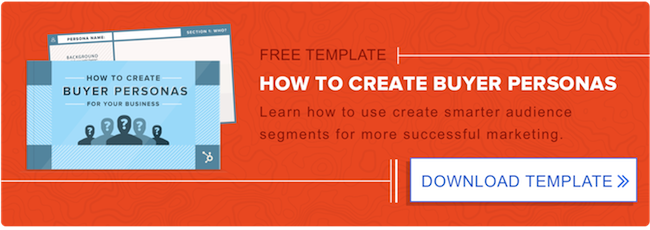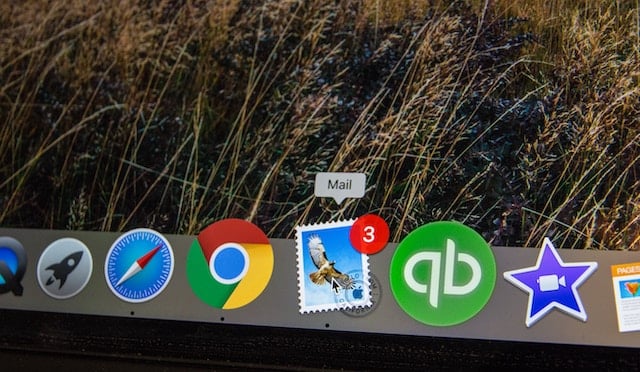 In my career as a marketer, I’ve heard a lot of disparaging things about the work we do. From having it called “fluff” -- to others saying we just play with colors and fonts all day.
In my career as a marketer, I’ve heard a lot of disparaging things about the work we do. From having it called “fluff” -- to others saying we just play with colors and fonts all day.

The marketing team at Solstice Benefits not only needed to drive quality leads to our sales team. We needed to prove the value of our work by connecting it to tangible ROI and bottom-line revenue for our sales team and company.
Our goal was to shift the perception of marketing within our organization from “creatives” to “powerhouses,” and from “nebulous” to “quantifiable.”
There were four things we needed to do to build this new image: align with sales, refine our content, understand our buyer personas through the eyes of our sales team, and adjust our marketing to create leads our sales team actually wanted. After working with a HubSpot consultant to facilitate a sales and marketing alignment workshop for our team, we finally had a plan.
The results: We increased our site visits by 22.45 percent, leads by 15.46 percent, and sales qualified leads (SQLs) by 46 percent just three months after our sales and marketing alignment.
Here’s our story for how we aligned sales and marketing to increase quality leads.
Step 1: Work with your sales team to develop buyer personas
First, we needed to understand our buyer persona. To figure this out, we asked our sales team to explain a typical meeting with their clients. We learned the questions they were asked in the field, the objections they needed to overcome, and the issues that we needed to solve for our customers.
We used this data -- and the fantastic persona training session provided by HubSpot Academy -- to build out our personas. We then circled back with sales to review the personas to ensure we painted an accurate picture of our clients. Once we did that, our sales team started to become more engaged with the work we did, because they felt we understood them better and were able to deliver marketing solutions that better addressed the needs of their leads.
 I’d highly recommend adding your personas to the new HubSpot Persona tool in your dashboard. It helped us refine our buyer's journey and marketing efforts by persona. The persona tool was a great visual to remind us of our personas every day when we logged into HubSpot.
I’d highly recommend adding your personas to the new HubSpot Persona tool in your dashboard. It helped us refine our buyer's journey and marketing efforts by persona. The persona tool was a great visual to remind us of our personas every day when we logged into HubSpot.
It also helped us identify which personas had a higher saturation of leads. Knowing that allowed us to address lower performing lead personas, which might indicate an issue with a workflow. For example, perhaps our workflow offers for a particular persona weren’t as strong as another.
Step 2: Define SQL properties and then connect those using HubSpot lists
Next we asked our sales team what constituted a good lead. At what stage would a prospective customer be interested in talking to our sales reps? We then used that data to map to our buyer's journey stage offers and content.
As an insurance company, providing items of value for our insurance brokers was key to creating strong offers. We began by addressing the key concerns they had by asking our sales team what issues were keeping our brokers up at night. Keeping up with the changes in the Affordable Care Act was the number one item our reps heard. We also asked questions in our landing page forms asking the brokers what they needed and we created new offers and content based on these responses.
From this research, our typical content now followed the buyer's journey with the following flow:
From here, we built a list in HubSpot for our decision stage leads (SQLs) using all the parameters from our sales team. A lead joins our SQL list when he/she downloads an end-of-the-buyer's journey offer. Once the lead reaches this point and requests a quote, demo, or consultation, we know they are ready to send to our sales team.
We integrated our SQL list with Salesforce. Through Salesforce, we can assign SQLs to sales rep by their respective geographic territory. For example: a broker in Long Island will be sent to our New York sales rep once they reach the end of the buyer's journey.

When we first started inbound marketing, we sent any and every lead that came through the door over to sales. Many were cold leads, leads that were not ready to talk to sales, or not really sure who Solstice even was to a degree. We quickly realized that we had to move these leads through the buyer's journey and properly engage and qualify them if we wanted to create value for our organization. Once we did that, we started to see leads that were interested in doing business with us and leads that our sales team was very excited to receive.
Step 3: Use HubSpot workflows to map your existing and future content around personas
Next step was to use workflows to support progression through the buyer's journey, but it was important that these workflows matched our different personas.
To do this, we first mapped all current content (landing pages, emails, workflows, and so on) to our personas. We determined what content was appropriate to which persona. From there, we created new workflows in HubSpot for each unique persona. Based off of our sales team’s feedback, we also knew that some personas had longer or shorter buying cycles, so we also adjusted the workflow delivery timeframe accordingly.
We created our workflows to move awareness stage leads down the buyer's journey and ultimately qualify the lead for handing over to sales. We wanted to cultivate a strong relationship with each lead and mimic the in-person relationship experience they would have if they were meeting with one of our sales team members. Our workflow's goal is to move leads from the beginning to the end of the buyer's journey -- turning them from a visitor to a sales qualified lead who was interested in doing business with our organization.
Step 4: Refine your buyer's journey. Constantly.
Once we had our SQL process working successfully and our sales team was satisfied with their leads, it was time to refine. We took a look at our workflow performance and email open rates to identify any underperforming workflow steps. We then made content and design changes to the email to see if that increased the open rate. If not, we assessed if the offer was truly relevant to our personas and adjusted accordingly.
Break Down the Barrier
The workshop HubSpot did for us on sales and marketing alignment gave us the tools to increase qualified leads, establish ROI and create tangible value to the work our marketing department created. If you are having a similar challenge, here are my two tips to hep you break down the barrier between sales and marketing:
1. Explain to your sales team how you can help them meet their goals and drive revenue. Break down exactly how your marketing team can bring new clients and hot leads to their door, all wrapped up and tied with a pretty bow. Chances are, your sales team has a tough job -- trying to get new customers isn’t easy and they will want the help. Your job as a marketer is to prove you’re a partner and how the inbound process creates value for them.
2. Show, don’t tell. Sales wants quality leads. So, we had to show them how marketing was going to deliver on that promise. I found that talking about inbound, keywords, SEO, and the buyer's journey made most people outside marketing glaze over. Instead, I logged into HubSpot, opened my dashboard and showed them a real live lead. I explained how this person got to our site (keywords and search engine), and then showed them the data and intelligence we capture. By seeing the lead’s interaction and the amount of data we have, we were able to prove that marketing wasn’t just an art, but a science. It showed them that we meant business and that these leads were powerful. Once the sales team was able to see how rich the lead data really was and the level of brand interaction the lead had with our company, they were on board.
I HubSpot because I love creating value for our organization and ROI for our marketing efforts.
More about Solstice Benefits: Solstice Benefits is a HubSpot customer and an insurance company offering dental, vision, pharmaceutical, life and short- and long-term disability benefits plans to employer groups and individuals. Solstice also offers a SaaS benefits and enrollment private exchange platform, the Solstice Marketplace.
What have you done to improve sales and marketing alignment? How do you prove your team's value?






![Plannuh Builds Product With the Customer at the Forefront [Customer Story]](https://53.fs1.hubspotusercontent-na1.net/hubfs/53/IMG_0128-3.jpg)
![How One HubSpot Customer Uses Pop-Up Forms and Workflows to More Intelligently Help Customers [Customer Story]](https://53.fs1.hubspotusercontent-na1.net/hubfs/53/inbound-lorax-ff7a59-light.jpg)


![How TurboTenant Makes Property Management Easy With HubSpot [Customer Story]](https://53.fs1.hubspotusercontent-na1.net/hubfs/53/unique-balcony-architecture.jpg)